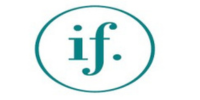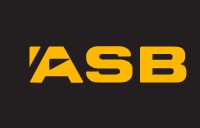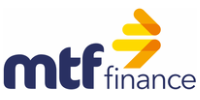Compare home renovation loans
Compare renovation loan options and find the best way to finance your home upgrade project in New Zealand.

The breakdown
- Rising construction costs and tighter lending rules mean more Kiwis are using loans to renovate rather than build new.
- Top-up mortgages and home equity loans offer lower rates for larger projects but require sufficient home equity and lender approval.
- Unsecured personal loans are easier to access and don’t need collateral, but they come with higher interest rates and shorter repayment terms.
Homeowners across New Zealand are increasingly choosing to renovate rather than build new homes, with rising construction costs, economic uncertainty, and stricter lending policies all playing a role.
If you’re considering upgrading your kitchen, re-roofing your house, or adding an extension, a home renovation or improvement loan could help turn your plans into reality.
This guide explains what these loans are, what types of financing options are available, how much you can borrow, and how to choose the right loan for your situation.
What is a home renovation or improvement loan?
A home renovation or improvement loan is financing specifically used to cover costs associated with upgrading or repairing your property.
This includes anything from cosmetic updates, like repainting or replacing flooring, to structural work such as extensions, roof replacements, or kitchen and bathroom overhauls.
In New Zealand, home renovation loans typically fall under three main categories:
- Unsecured or secured personal loans: These are suitable for projects costing up to around $50,000. Because they are riskier for lenders, interest rates for unsecured loans are usually higher than for secured loans.
- Top-up home loan: This involves borrowing extra money against your existing home loan. These loans generally offer lower interest rates and longer repayment terms than personal loans. You’ll need sufficient equity in your home and may need a property valuation.
- Home equity loans or revolving credit facilities: These allow you to access the equity in your home in a more flexible way, either as a lump sum or through a drawdown facility you can use over time. These are ideal for ongoing or staged renovation work.
Depending on the size and scope of your project, some homeowners also consider construction loans or refinancing their existing mortgage to accommodate renovation costs.
Is it worth getting a home renovation loan?
Renovation loans can be a smart investment, especially when they add value to your property. With new construction volumes dropping from over $6 billion to under $5 billion in 2025, many homeowners are opting to upgrade their current homes instead of building new ones.
Home renovation loans can offer both financial benefits and risks. Below is a breakdown of the main pros and cons to consider before applying.
Pros:
- Can significantly increase your property’s value
- Access to funds without depleting savings
- May be tax-deductible if used on investment properties
Cons:
- Interest costs over the life of the loan
- Increases your overall debt burden
How much can you borrow for renovations?
Lenders evaluate several factors when determining how much you can borrow for a renovation. These include your income, home equity, and the estimated cost of the renovation itself:
- Your income and debt-to-income ratio: Lenders will assess your ability to repay based on your income and existing financial commitments.
- Equity in your home: For top-up and home equity loans, the amount you can borrow is directly tied to how much equity you have.
- Renovation scope and cost: You’ll likely need to provide quotes or detailed plans so the lender can assess the project’s feasibility.
In Auckland, renovation costs can range from $1,100 to $1,920 per m² for basic projects, and exceed $4,800 per m² for high-end renovations.
Older homes built before the 1940s often require 25–40% more budget due to outdated infrastructure, hazardous materials like asbestos, and compliance costs.
Compare home renovation personal loans
| Lender | Interest rate (p.a.) | Loan amount | Terms | Establishment fee | |
|---|---|---|---|---|---|
 Instant Finance
Instant Finance
|
9.95% - 29.95% | $500 to $50,000 | 3 months to 7 years | From $100 to $220, depending on amount. | |
 ANZ
ANZ
|
13.90% | $3,000 to $50,000 | 6 months to 7 years | $0 | |
 ASB
ASB
|
13.90% | From $2,000 | 6 months to 7 years | $99 | |
 MTF Finance
MTF Finance
|
10.30% to 23.60% | $2,000 to $500,000 | 3 months to 5 years | Up to $376 | |
 Westpac
Westpac
|
13.90% | Up to $50,000 | 6 months to 5 years | $0 | |
 BNZ
BNZ
|
12.65% | $1,000 to $30,000 | 3 months to 5 years | $50 |
Loan terms: How long can you borrow for?
Different loan types come with varying term lengths. Below is a summary of typical terms based on loan type:
- Personal loans: Typically available for 1 to 7 years. Best suited for smaller projects with clear budgets.
- Top-up mortgages/home equity loans: Can extend up to the remaining term of your mortgage, usually 10–30 years. Ideal for spreading the cost of larger projects.
- Construction loans: Generally short-term (6–24 months), transitioning into a standard home loan upon completion of the renovation.
Longer terms reduce your monthly payments but increase the total interest paid over time. Some lenders also allow interest-only payments during renovation phases.
Alternatives to renovation loans
If taking out a renovation loan isn’t the right fit for you, consider these alternative ways to fund your home upgrades:
- Using savings: Ideal if the renovation is modest and you want to avoid taking on new debt.
- Government grants: Grants or subsidies are available for energy-efficient improvements like insulation, solar panels, and heat pumps. Learn more in our guide to green loans, grants, and other finance options.
- Offset mortgage accounts: Help reduce overall interest by offsetting loan balances with savings.
- Credit cards: Only practical for very small upgrades or emergency repairs, given high interest rates. Compare credit cards in our guide.
Tips to boost approval and save on costs
Getting approved for a renovation loan and keeping your total costs down is possible with careful planning. Here are some proven strategies:
- Check your credit score: A higher score can help you qualify for lower interest rates. Request your credit report and address any issues in advance.
- Reduce existing debt: Lenders will assess your overall financial position. Paying down existing loans and credit card balances can improve your chances.
- Provide detailed renovation plans: Lenders want to see that you’ve costed your project thoroughly. Submit itemised quotes and project timelines.
- Stage your renovations: Splitting work into phases can make funding more manageable and improve your cash flow.
- Shop around: Don’t just talk to your existing bank. Compare offers from multiple lenders, especially non-bank lenders and credit unions.
- Bundle with your mortgage: If refinancing, consider rolling the renovation cost into a new mortgage to access better interest rates.
Frequently asked questions
What is the maximum home improvement loan I can get in NZ?
The maximum amount depends on your financial situation, lender policies, and the type of loan you apply for. For personal loans, banks may cap amounts at around $50,000.
However, with top-up mortgages or home equity loans, the limit is typically based on your available equity, often up to 80% of your home’s value minus your current mortgage. Some borrowers with strong equity positions may access $100,000 or more for extensive renovations.
Can I borrow against my house to renovate?
Yes. If you have sufficient equity in your property, you can apply for a top-up mortgage, a home equity loan, or a revolving credit facility.
These options generally offer lower interest rates than unsecured loans because your home serves as security. Lenders will evaluate your income, debt levels, and the value of your property. A property valuation may be required, and you may also need to provide quotes or plans for the renovation work.
What is the best way to pay for renovations?
The best approach depends on your financial goals, the size of your project, and your available funds. If you have adequate savings, paying in cash can help you avoid interest altogether.
For medium or large renovations, a top-up mortgage or home equity loan is often the most cost-effective option due to lower interest rates. Unsecured personal loans are better suited to small, fast-turnaround upgrades.
Which is better: a personal loan or home improvement loan?
These terms are often used interchangeably in New Zealand. However, a “home improvement loan” generally refers to any loan used for renovations.
Unsecured personal loans may have higher interest rates but don’t require property as collateral, making them quicker and easier to access. Home equity-based loans are often cheaper but involve more paperwork and longer processing times.
Are there government incentives for renovations?
Yes. If you’re planning to install energy-efficient systems or improve your home’s insulation and heating, there are several government and local council funding schemes available in New Zealand.
For example, the government’s Warmer Kiwi Homes programme offers grants that cover 80% of the cost of ceiling and underfloor insulation or approved heaters (such as heat pumps and wood burners) for eligible low-income homeowners. You must meet certain criteria, including living in a pre-2008 home and having no existing insulation or fixed heating.
Most major banks, including Westpac, ANZ, BNZ, ASB, and Kiwibank,also offer green home loan top-ups that can be used to fund solar energy systems, heat pumps, insulation, double glazing, and even electric vehicle chargers. These loans often feature low or zero interest rates, but you must already have a home loan with the respective bank or be willing to switch.
Local council funding schemes also exist. If you live in Marlborough or Hawkes Bay, you may qualify for special funding programmes that let you pay for energy upgrades through your rates. These schemes typically carry interest rates between 4% and 6% and offer loan terms of up to 10 years.
Whether you’re installing solar panels, upgrading your heating, or adding insulation, it’s worth exploring all your funding options—from national grants to council programmes and bank offers—to reduce your upfront costs and improve your home’s sustainability.
Learn more in our comprehensive guide to green loans and grants.
